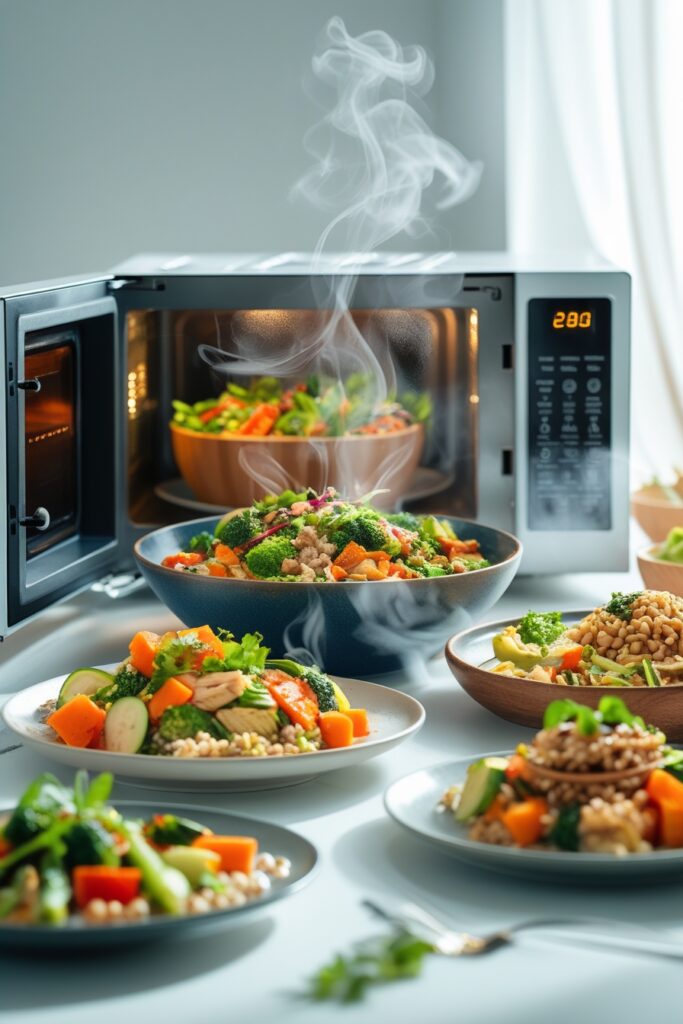
How to Use Microwaves Safely and Effectively: Essential Tips and Tricks
Modern kitchens must have microwaves since they reheat and cook meals quickly, saving time. Not everyone is on the ball, though; people need to know how to use them securely. Misuse of a microwave can cause injuries, uneven cooking, and even fires. This guide will walk you through the principles of microwave safety so you and your kitchen are safe using this helpful technology.
1. Just use containers safe for microwaves.
The container you use will either make or break your microwave experience.
- Look for the microwave-safe emblem at the bases of your containers. Never microwave anything unless the label states it is safe to do so. Otherwise, it can catch fire, melt, poison your food, or melt.
- Avoid one-time-use plastics and other generic plastic containers since they may distort or spill harmful chemicals when heated.
- For your containers, choose ceramic or glass-heat-resistant materials. Be sure to look for metallic paint or trim, as these might reflect microwaves and create sparks.
2. Never microwave foil or metal.
Metal and microwaves disagree; sparks will fly. Avoid metal objects to maintain perfect microwave and kitchen conditions.
- Microwaves reflecting off metal surfaces can cause spikes and even flames. This includes items like cutlery, aluminum foil, metallic rims, and crockery decorations.
- Before cooking, move food from metal containers to a dish suitable for microwave heating. Remove the foil completely before microwaving leftovers kept in it.
- Takeout containers call for special attention. Some have metallic material hand-made liners or handles hidden inside.
3. Cover to stop splattering of food.
Covering food in the microwave guarantees it will cook evenly and prevent messiness.
- To catch steam, use coverings designed for microwaves-wax paper, perforated plastic wrap, or microwave-safe lids.
- Vent the cover with a small opening to let steam escape. One can prevent a messy explosion by avoiding pressure accumulation.
- Correct covering of food locks in moisture, therefore promoting consistent cooking.
4. Turn Food Around or Stirring During Cooking
Microwaves’ special heating mechanism makes cooking less consistent than that of more traditional techniques. This makes using rotation and stirring essential.
- When they run, microwaves often create zones of high heat and cold. Midway through cooking, take a moment to turn or stir your dish to avoid biting into a cold area in the middle of a hot meal.
- Stirring soups or casseroles periodically while cooking will help you to be sure that more significant amounts or densified meals lack any overdone areas.
- If your microwave rotates, ensure the plate is lined up correctly; this simple change will produce far better cooking results.
5. Verify Complete Heating using a Food Thermometer
Killing germs depends on ensuring your food is safe by heating it to the proper temperature.
- Before presenting any prepared food, including leftovers, especially meat, you should check the inside temperature. The USDA says food must reach a minimum safe temperature of 165°F or 74°C.
- Undercooked or non-homogeneous cooking can lead to bacterial food poisoning. For a small cost, buying a food thermometer could provide significant convenience.
- Everyday items that call for more excellent care are poultry, seafood, and meals cooked with eggs.
Using Microwave Safely and Effectively: Important Advice and Tricks
Microwaves are a lifesaver when operating correctly. Following these simple guidelines will help you keep your food at the correct temperature, your appliances in good running order, and your kitchen clear of possible hazards. From selecting the right containers to using a trustworthy food thermometer to guarantee even heating, these ideas will transform your microwave cooking.
Do you know someone who would profit from a review of fundamental food safety practices? Share this book with someone if you wish to change things!
